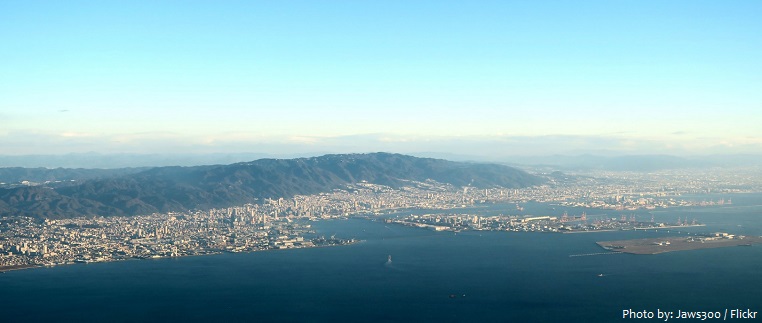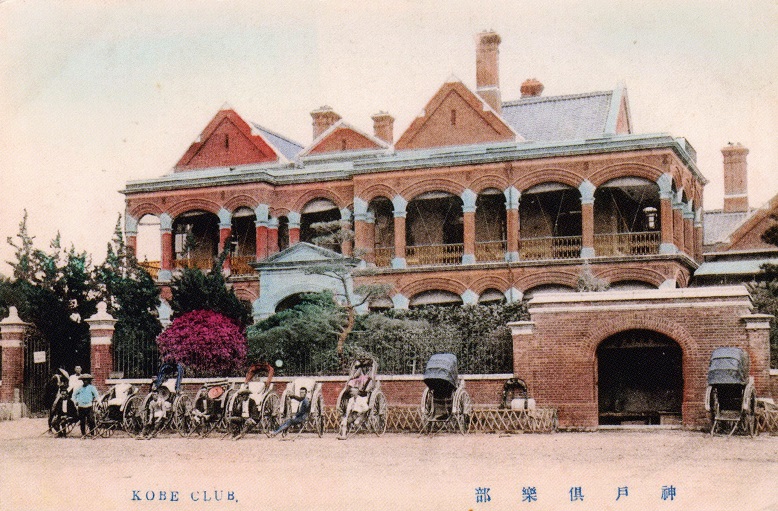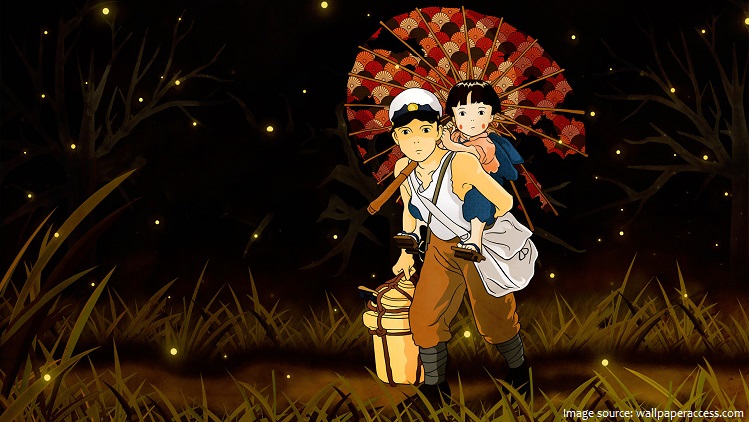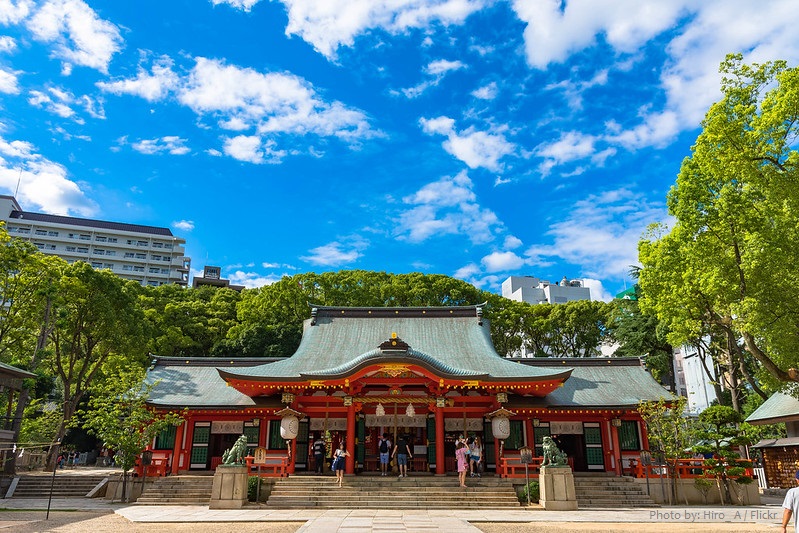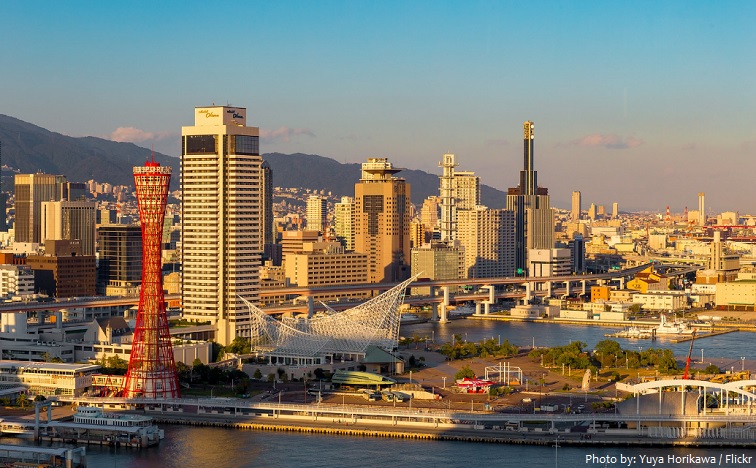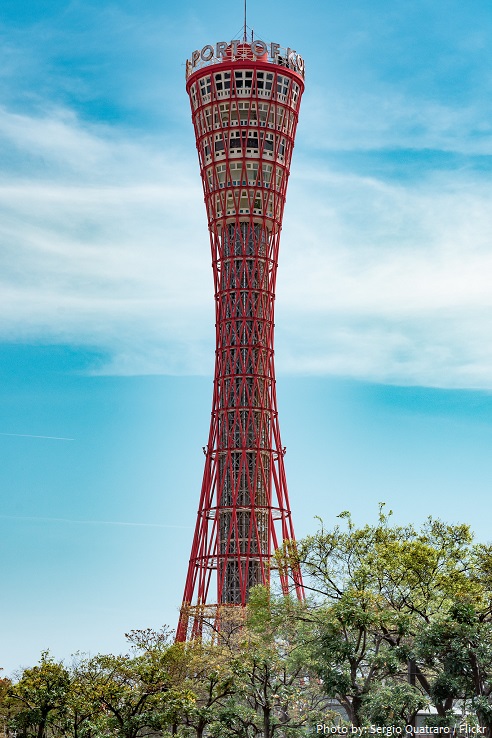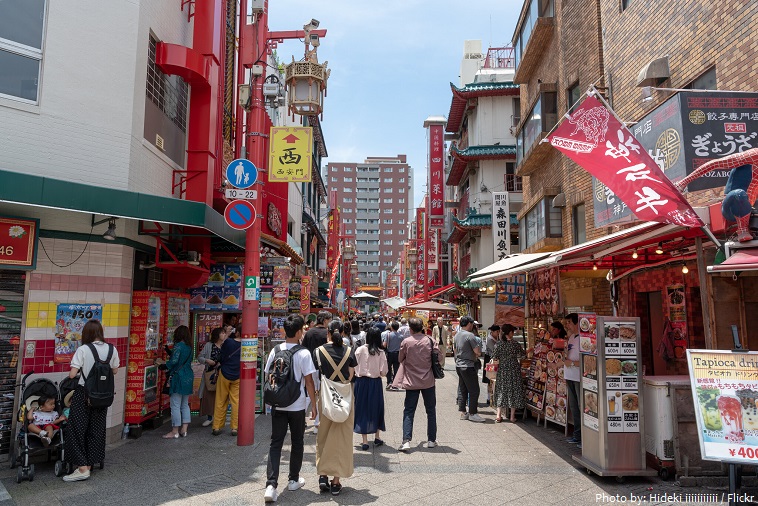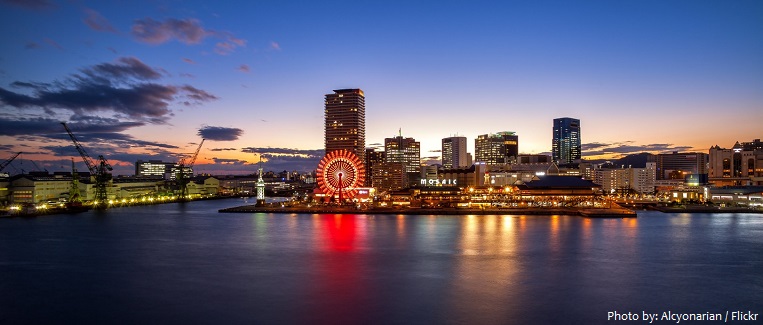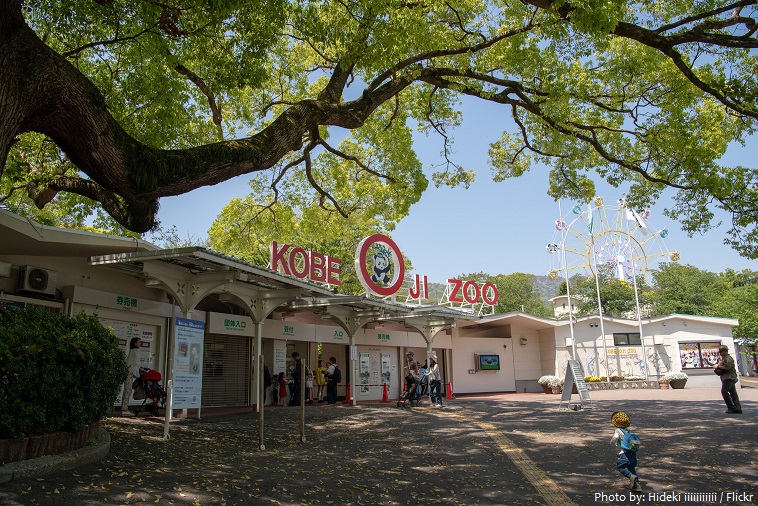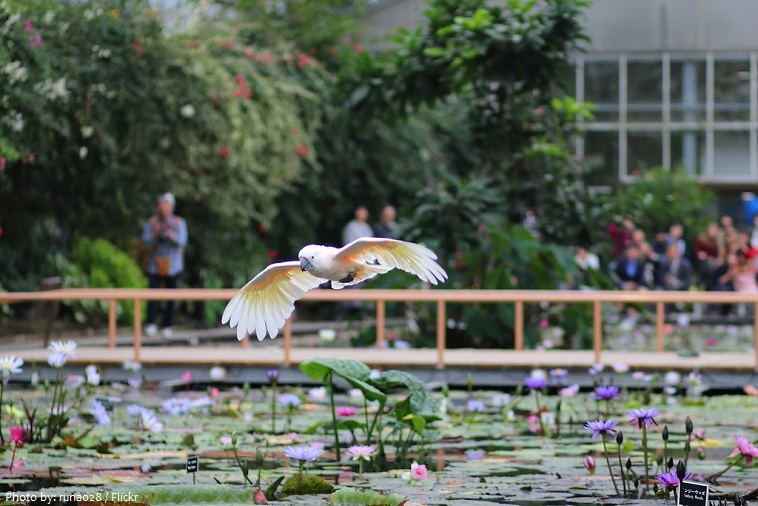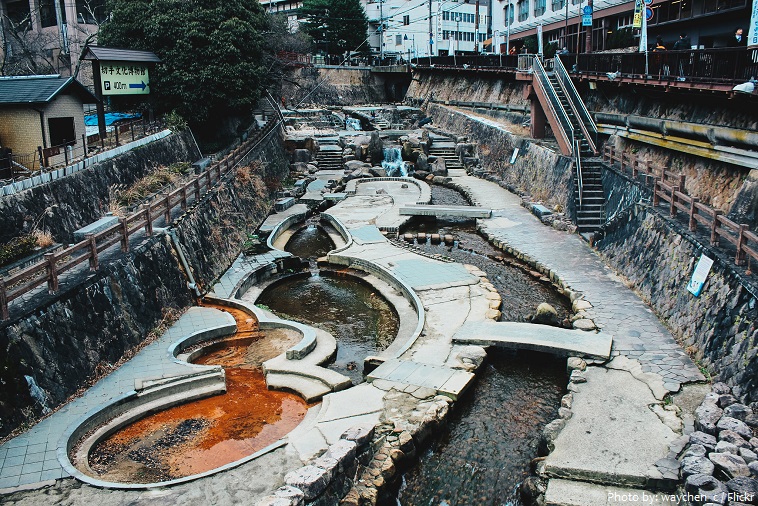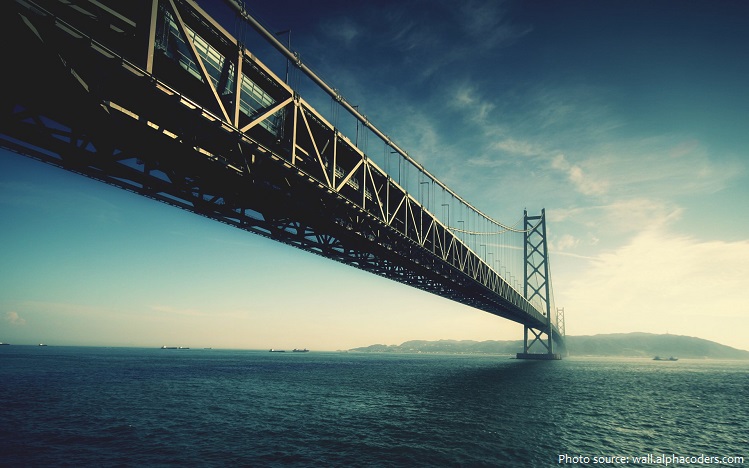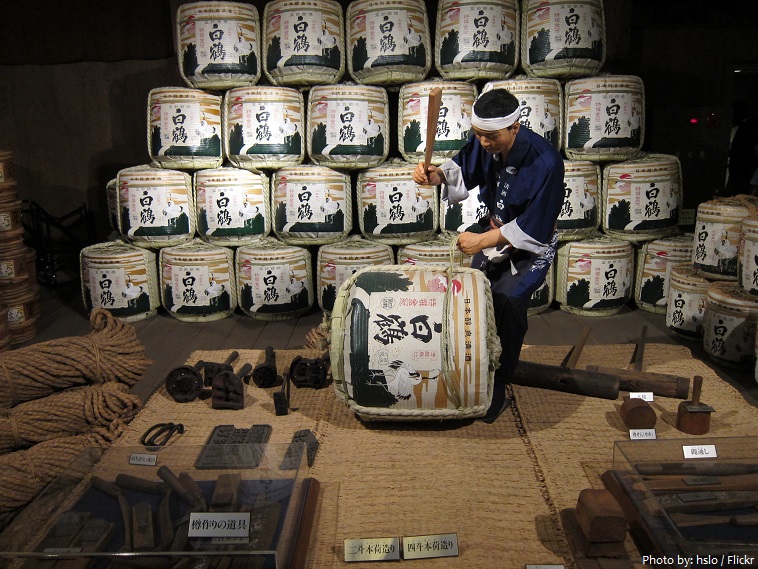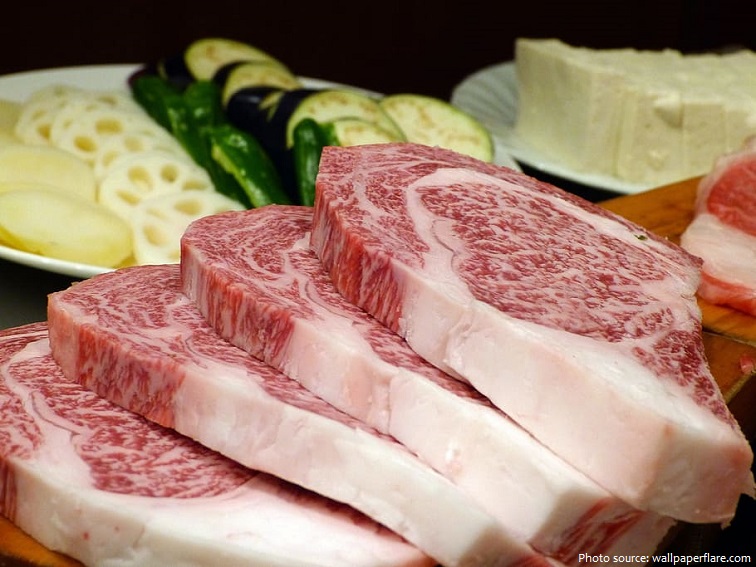Kobe is the capital city of Hyōgo Prefecture and a prominent seaport city in Japan.
Wedged between the coast and the mountains, the city of Kobe is long and narrow.
It is located on the southern side of the main island of Honshū, on the north shore of Osaka Bay and about 30 km (19 mi) west of Osaka.
As of July 2020, the population of Kobe is about 1,600,000 people.
The city covers a total area of 557 square kilometers (215 square miles).
Tools found in western Kobe demonstrate the area was populated at least from the Jōmon period (14,000 to 300 BC).
The earliest written records regarding the region come from the Nihon Shoki, which describes the founding of the Ikuta Shrine by Empress Jingū in AD 201.
For most of its history, the area was never a single political entity, even during the Tokugawa period, when the port was controlled directly by the Tokugawa shogunate.
Kobe did not exist in its current form until its founding in 1889.
The history of the city is closely tied to that of the Ikuta Shrine, and the name “Kobe” derives from kamube (神戸, later kanbe), an archaic name for those who supported the shrine.
During World War II, Kobe was bombed in the Doolittle Raid on April 18, 1942, along with Tokyo and a few other cities.
It was bombed again with incendiary bombs by B-29 bombers on March 17, 1945, causing the death of 8,841 residents and destroying 21% of Kobe’s urban area. This incident inspired the well-known Studio Ghibli film Grave of the Fireflies and the book by Akiyuki Nosaka on which the film was based. It also features in the motion picture A Boy Called H.
Following continuous pressure from citizens, on March 18, 1975, the Kobe City Council passed an ordinance banning vessels carrying nuclear weapons from Kobe Port. This effectively prevented any U.S. warships from entering the port, policy being not to disclose whether any warship is carrying nuclear weapons. This nonproliferation policy has been termed the “Kobe formula”.
In 1995, Kobe was hit by the Great Hanshin-Awaji Earthquake, which killed over 5000 people and destroyed tens of thousands of buildings. Today the city is completely rebuilt, and few signs of the terrible event remain.
Ikuta Shrine is a Shinto shrine in the Chūō Ward of Kobe, and is possibly among the oldest shrines in the country. According to Nihon Shoki, it was founded by the Empress Jingū at the beginning of the 3rd century AD to enshrine the kami Wakahirume.
Meriken Park is a waterfront park located in the port city of Kobe. The park features the Kobe Port Tower, Kobe Maritime Museum, and a memorial to victims of the Great Hanshin earthquake. The name of the park comes from the word “American,” which was commonly translated as “Meriken” during the Meiji era.
The Kobe Port Tower is one of the landmarks in the port city of Kobe. The sightseeing tower was completed in 1963. It is located in the Central District. The Kobe Port Tower is 108 m (354 ft 3.97 in) high with total of 8 layers that is designed as the outlook of Tsuzumi which is a Japanese drum, and it is the first tower built using a pipe lattice. The Tower is surrounded by 32 red steel staves as symbolize welcome vessels return to the shore.
Nankin-machi is a neighborhood in Kobe is a major tourist attraction. Considered as Kobe’s Chinatown, the area has over a hundred Chinese restaurants, shops, and a Chinese temple dedicated to Guan Yu. Most shops show off their cuisine on display stands for potential customers. Some examples include dim sum, dumplings, buns, and Chinese pastries. During the Lunar New Year and the Mid Autumn season, two major festivals celebrated by Chinese people worldwide, New Year’s delicacies and Moon Cakes appear.
Harborland is a shopping district in Chuo-ku, Kobe. Kobe Port Tower is located there. This shopping district was made on the site of the former freight yard, Minatogawa Kamotsu Station of the Japanese National Railways. The yard was removed in 1982 and the shopping district opened in 1992.
Kōbe Ōji Zoo or simply Kobe Zoo or Ōji Zoo, is a municipal zoo in Kobe. The total area is more than 80,000 square meters with 850 animals from a total of 150 different species on the premises, including rarely seen animals such as giant panda, koala, golden snub-nosed monkey, Amur tiger, and snow-leopard among others. Some of the most popular attractions are the pandas Koko and Tantan, and the female elephant Suwako, born in 1943, making it the oldest living elephant in Japan.
Kobe Animal Kingdom is an animal and flower park located on Port Island in Kobe. It is mainly located in and around a greenhouse. It is one of several theme parks created by Japanese botanist and collector Kamo Mototeru, and was opened on 15 March 2006. This all-weather park is based on the concept of contact with birds and flowers. In the park, visitors are able to touch and feed birds.
Arima Onsen is an onsen, or hot springs in Kita-ku, Kobe. This Onsen is still a hidden treasure of modern Kobe. It attracts many Japanese who want tranquility with beautiful natural surroundings and yet easy access from the busy cities in the Kansai metropolitan area including Osaka. Arima Onsen was named in “The Pillow Book”, a famous Heian Era book, as one of the three famous springs in Japan. It was selected as the most prestigious hot spring during the Edo Era.
The Akashi Kaikyō Bridge is a suspension bridge, which links the city of Kobe on the Japanese mainland of Honshu to Iwaya on Awaji Island. It crosses the busy Akashi Strait as part of the Honshu–Shikoku Highway. It was completed in 1998, and has the longest central span of any suspension bridge in the world, at 1,991 metres (6,532 ft; 1.237 mi). It is one of the key links of the Honshū–Shikoku Bridge Project, which created three routes across the Inland Sea.
Hakutsuru Sake Brewery Museum is part of the Nadagogo sake brewing district of Kobe. This museum has a large display of original sake brewing equipment spread over 2 floors. Hakutsuru is Japan’s Number 1 selling sake brand.
Kobe is world famous for its Kobe beef. It is Wagyu beef from the Tajima strain of Japanese Black cattle, raised in Japan’s Hyōgo Prefecture according to rules set out by the Kobe Beef Marketing and Distribution Promotion Association. The meat is a delicacy, valued for its flavor, tenderness, and fatty, well-marbled texture. Kobe beef can be prepared as steak, sukiyaki, shabu-shabu, sashimi, and teppanyaki. Kobe beef is generally considered one of the three top brands (known as Sandai Wagyu, “the three big beefs”), along with Matsusaka beef and Ōmi beef or Yonezawa beef.
Kōbe, its neighbouring city Ōsaka, and nearby Kyōto are the centres of the Keihanshin Industrial Zone, the second largest urban and industrial agglomeration in Japan, and the city and its surroundings constitute the western portion of the Ōsaka-Kōbe metropolitan area.
There are about 1,450 public parks, giving Kobe a reputation for being “green,” and a very livable place for families.
Kobe is the site of Japan’s first golf course, Kobe Golf Club, established by Arthur Hesketh Groom in 1903.

